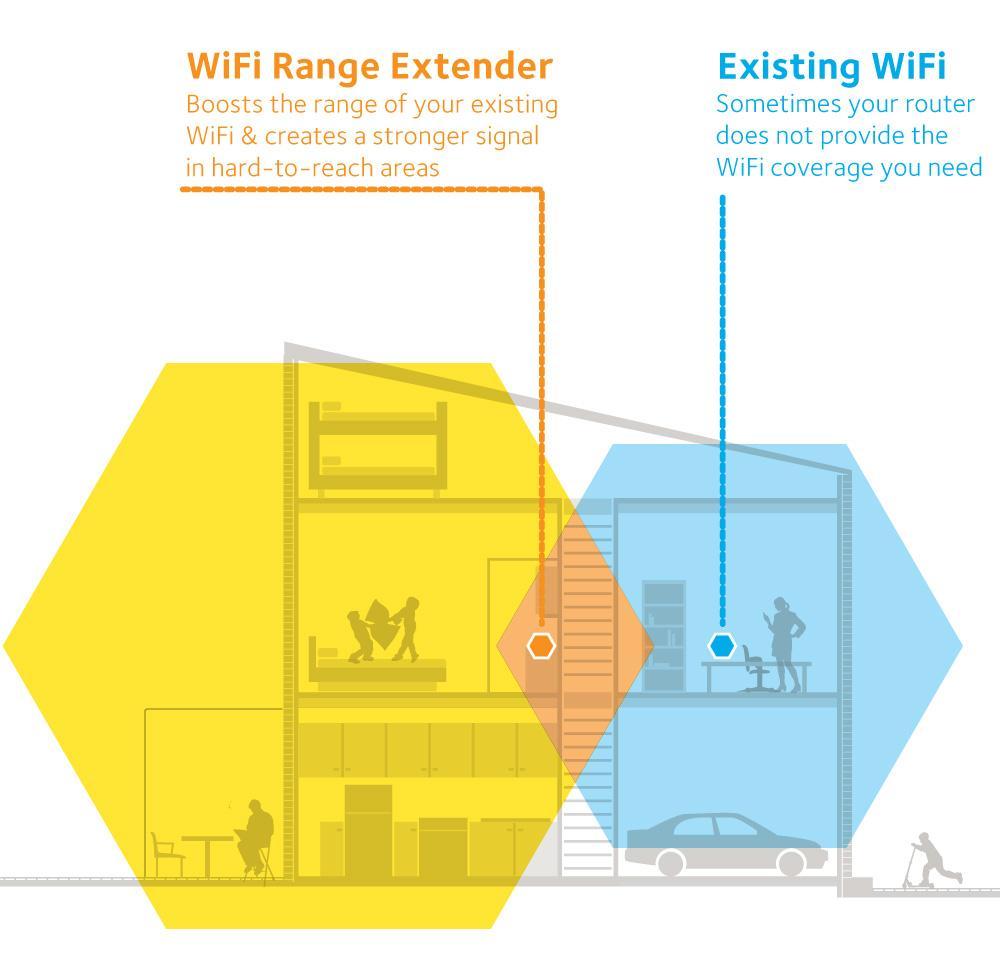Top tips to beat those WiFi blackspots
9th January, 2017 | Home / Blog / Broadband and technology / Top tips to beat those WiFi blackspotsReading time: 4 minutes

Whether you live in an old house, big house, new house or just an odd-shaped house, all of these could be affecting the WiFi signal you’re getting around your home. With WiFi range impacted by so many different factors, it’s important to have the right equipment in place to ensure you’ve got no connectivity blind spots.
It’s fair to say that the majority of us can no longer live without the digital lifeline we know as ‘the internet’, and so the means in which it is delivered to us ‘broadband’, and finally the way it is fed to our 10s (if not 100s!) of devices in our homes – WiFi. So, imagine you’re at home, watching the latest crime drama on catch-up and you see the little wheel of doom spinning round and round…frustrating huh? If your broadband speed isn’t the problem (remember, you only need 2-3Mbps for streaming on catch-up players – find out how much broadband you need here), it’s likely that the range of your WiFi router may not be quite strong enough to reach the room you’re in.
Why doesn’t my wifi router range reach every room?
This could be due to variety of different reasons (check out our top 6 tips to maximise your routers performance here). It’s fairly typical in older properties that have thick walls and less open-plan living arrangements, or larger homes, for WiFi signal to be limited in rooms further away from your router, or for other electrical items to interfere and diminish signal, or simply that your router is not quite powerful enough to extend signal as far as you need it to.
How can I fix the lack of wifi range across my home?
The jolly good thing is that there is solutions out there for extending or boosting the range of your router, aptly named ‘WiFi Extenders’ or ‘WiFi Boosters’. These clever little devices don’t take a technical wizard to set up – they are virtually plug-in and go, and will work instantaneously to improve the connection quality and speeds to devices across your home.
Which form of wifi booster should I choose?
WiFi Extenders
A WiFi extender is a small wireless device that plugs into a wall socket, picks up the signal from your router, and then re-broadcasts it out. It basically helps to share the signal further around your home where there is usually internet dead zones, and all for a relatively cheap outlay.
It may be a case of trial and error to find the best place to position your WiFi extender in order to get the right balance between coverage and speed. It’s important to remember that the extender only re-broadcasts the signal that it receives, so if you position it in an area of your home that has poor signal, the extender will also only pick up a poor signal. It may seem strange, but you’ll probably end up positioning the extender much closer to your router than you’d expect. The diagram below demonstrates how a WiFi extender works.

It’s worth bearing in mind that there are drawbacks to WiFi extenders though. Signal loss is still always a problem, as most of them have to split their bandwidth between receiving a signal and then broadcasting it out – potentially causing as much as a 50% reduction in bandwidth being re-transmitted out.
Powerline Adapters
A Powerline adapter works by transmitting data through the electrical cabling in your home. The adapters are small devices that plug into sockets around your home that have Ethernet ports so you can connect devices directly to them.
In order to set a powerline adapter up, you need to connect one adapter to your router and plug it in nearby to the router. You’ll then need to plug another powerline adapter into a socket in another room where you need the better signal, and then connect a device. Some will offer a wired connection to a device, and some of the more expensive models now offer wireless connectivity – so they essentially act like a more competent version of a WiFi extender.
In terms of speeds and quality, there is no two ways about it, Powerline adapters are better than WiFi extenders, however, they are a little bit trickier to set up, are more expensive and are subject to other affecting factors. For example, for better results, the adapters should be on the same mains circuit, should be as clear as possible from electrical noise, and should avoid being used with the likes of extension leads.
Conclusion
In short, both of these options are suitable and convenient for extending the range of the WiFi across your home.
It is the general consensus from tech experts that Powerline Adapters offer a much better extension of internet connectivity in terms of both speed and quality. Although usually costing more, they are reasonably simple to set up and will ensure a working solution to your WiFi dead spots.
Whichever solution you decide to go with, make sure you shop around and do your research on the best make and model – there’s plenty of help out there on the web!
Related Articles
Check availability:


